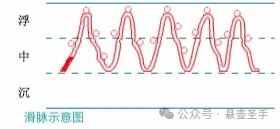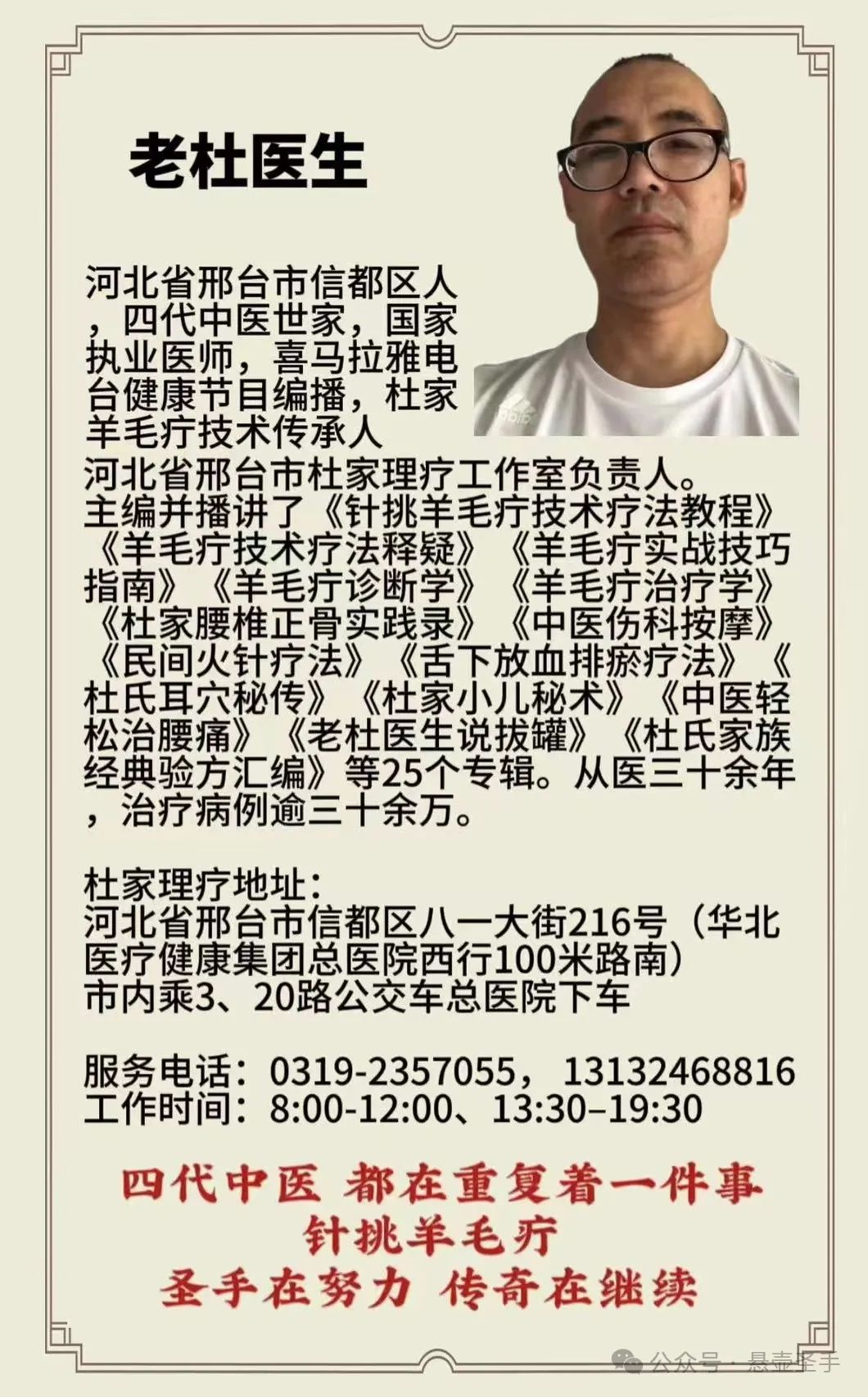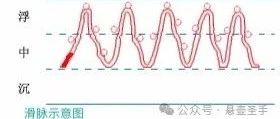
The slippery pulse (hua mai) is a unique and diagnostically significant pulse type in Traditional Chinese Medicine (TCM). A deep understanding of its body image, main diseases, and associated pulses can help accurately assess the patient’s condition.

“Slippery pulse flows smoothly; the shape resembles rolling beads, embodying the essence of dew on lotus leaves.” This poetic description vividly illustrates the characteristics of the slippery pulse. The phrase “slippery pulse flows smoothly” describes the pulsation sensation, akin to beads rolling in succession, coherent and smooth, with a dynamic feeling of fluidity. The pulse is felt by the physician’s fingers as unobstructed, without any stagnation. The “shape resembling rolling beads” further emphasizes its form, smooth and round, vividly illustrating the fluid quality of the slippery pulse. The “essence of dew on lotus leaves” metaphorically describes the clear and freely rolling dew drops, which also reflects the lively and fluid characteristics of the slippery pulse.
In TCM theory, the slippery pulse belongs to the yang pulses and often indicates conditions related to phlegm and dampness. However, the presence of a slippery pulse in different locations corresponds to different main diseases.
Cun pulse (cun bu): The cun position corresponds to the upper part of the body. A slippery pulse in this area is commonly seen in cough conditions, where phlegm and dampness obstruct the lungs, leading to a failure of the lung’s dispersing and descending functions, resulting in cough. It may also be accompanied by chest fullness (a feeling of fullness and discomfort in the chest) and nausea (symptoms of vomiting and upward stomach qi). Phlegm obstructs the lung, hindering the flow of qi, causing chest fullness; phlegm evil affects the normal descent of stomach qi, leading to nausea.
Guan pulse (guan bu): The guan position corresponds to the middle jiao. A slippery pulse here often indicates stomach heat, where heat accumulates in the stomach, enhancing its rotting and ripening functions, which can lead to qi stagnation. Additionally, irregular eating habits can cause food stagnation, resulting in a slippery pulse in the guan position. The interaction between stomach heat and food stagnation leads to impaired qi flow in the middle jiao, resulting in symptoms such as stomach distension, belching, and acid reflux.
Chi pulse (chi bu): The chi position corresponds to the lower jiao. A slippery pulse here can indicate various lower jiao conditions. For instance, it may suggest painful urination (dysuria) due to urinary tract infections, characterized by frequent urination, urgency, and pain; or dysentery accumulation, referring to intestinal diseases leading to stagnation. In men, a slippery pulse may also indicate hematuria (blood in urine); in women, it may manifest as menstrual stagnation, such as irregular menstruation or difficulty during menstruation. Damp-heat accumulation in the lower jiao affects the bladder’s qi transformation, leading to dysuria and hematuria; damp-heat descending into the intestines can cause dysentery accumulation; while stagnation of qi and blood in women can lead to menstrual issues.
The slippery pulse often appears alongside other pulse types, forming associated pulses, and different combinations of associated pulses reflect various conditions.
Floating slippery phlegm: The floating pulse indicates the exterior, while the slippery pulse indicates phlegm. The combination of floating and slippery suggests the invasion of wind evil combined with phlegm, affecting the body’s surface. Wind-phlegm obstructing the meridians can lead to symptoms such as headache, dizziness, and limb numbness, commonly seen in conditions with external wind evil combined with phlegm.
Deep slippery phlegm food: The deep pulse indicates the interior, while deep slippery suggests phlegm and food stagnation in the interior. Dysfunction of the middle jiao’s spleen and stomach leads to mutual accumulation of phlegm and food, resulting in symptoms such as abdominal distension, loss of appetite, and nausea or vomiting, commonly seen in indigestion and gastrointestinal disorders.
Slippery rapid phlegm heat: The rapid pulse indicates heat, and the combination of slippery and rapid suggests the presence of phlegm-heat in the body. The mutual accumulation of phlegm and heat can disturb the mind, leading to symptoms such as irritability and insomnia; phlegm-heat obstructing the lungs can exacerbate cough and produce yellow, thick phlegm, commonly seen in lung heat cough.
Slippery short qi obstruction: The short pulse indicates qi disorders, and the slippery short pulse suggests phlegm obstructing the qi mechanism, leading to qi obstruction. Patients may experience chest tightness, shortness of breath, and difficulty breathing, due to phlegm obstructing the airways and hindering lung qi.
Slippery and floating large, urination causes yin pain: This pulse combination suggests damp-heat accumulation in the lower jiao, accompanied by qi and blood obstruction. Damp-heat descending into the bladder and genital area can lead to symptoms such as pain during urination, commonly seen in urinary tract infections combined with local qi and blood obstruction.
Slippery and floating scattered, stroke paralysis: The floating scattered pulse often indicates a severe condition with dispersed qi and blood. The combination of slippery and floating suggests the interaction of phlegm-damp evil and chaotic qi and blood, which can easily lead to severe diseases such as stroke, resulting in limb paralysis and speech difficulties.
Slippery and harmonious, pregnancy can be determined: If a woman’s pulse is slippery and harmonious, soft and even, and other diseases are ruled out, it often indicates pregnancy. This is because during pregnancy, the woman’s qi and blood undergo changes, with abundant qi and blood in the chong and ren channels, resulting in a slippery pulse, which is one of the important traditional indicators for diagnosing pregnancy in TCM.
The slippery pulse, through its unique body image, main disease patterns, and diverse associated pulse manifestations, provides important clues for clinical diagnosis in TCM. Practitioners analyze the slippery pulse and its associated pulses in conjunction with the patient’s symptoms and signs to accurately assess the condition, providing strong support for the diagnosis and treatment of diseases.




